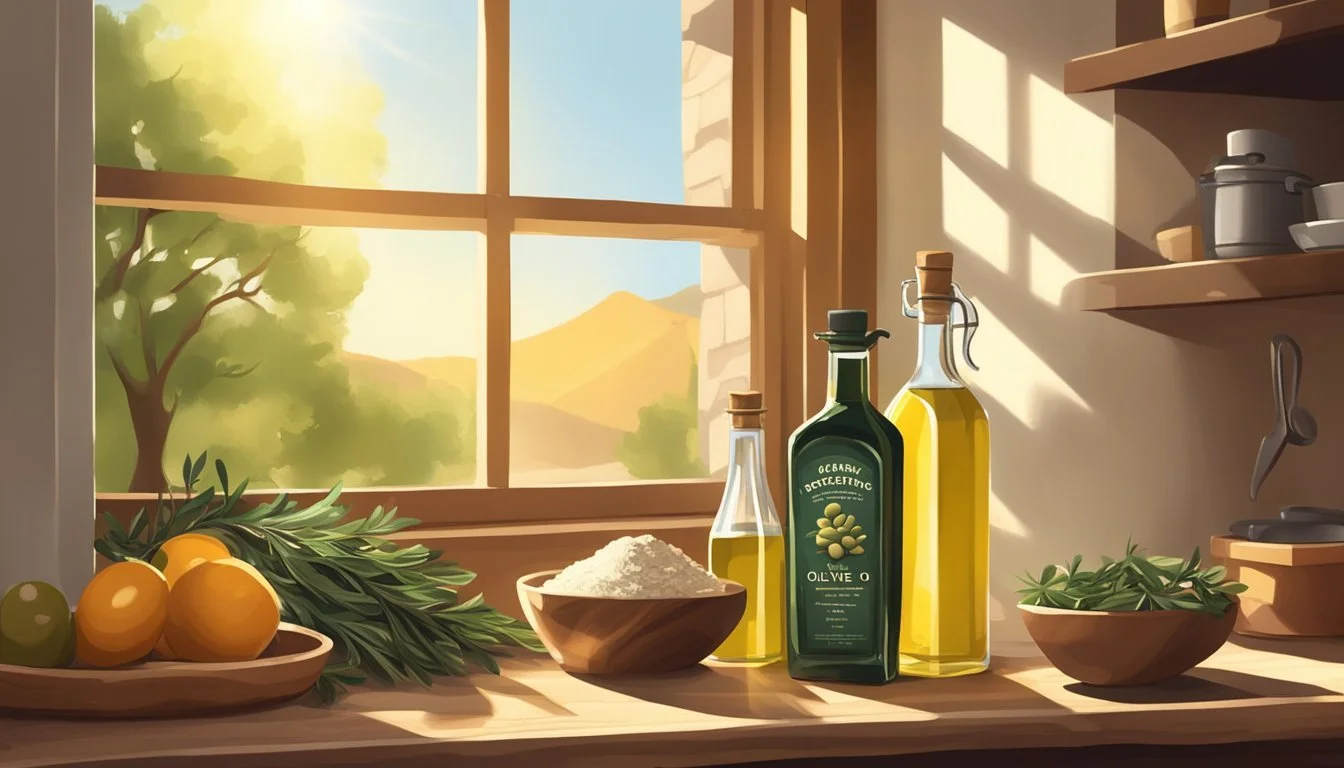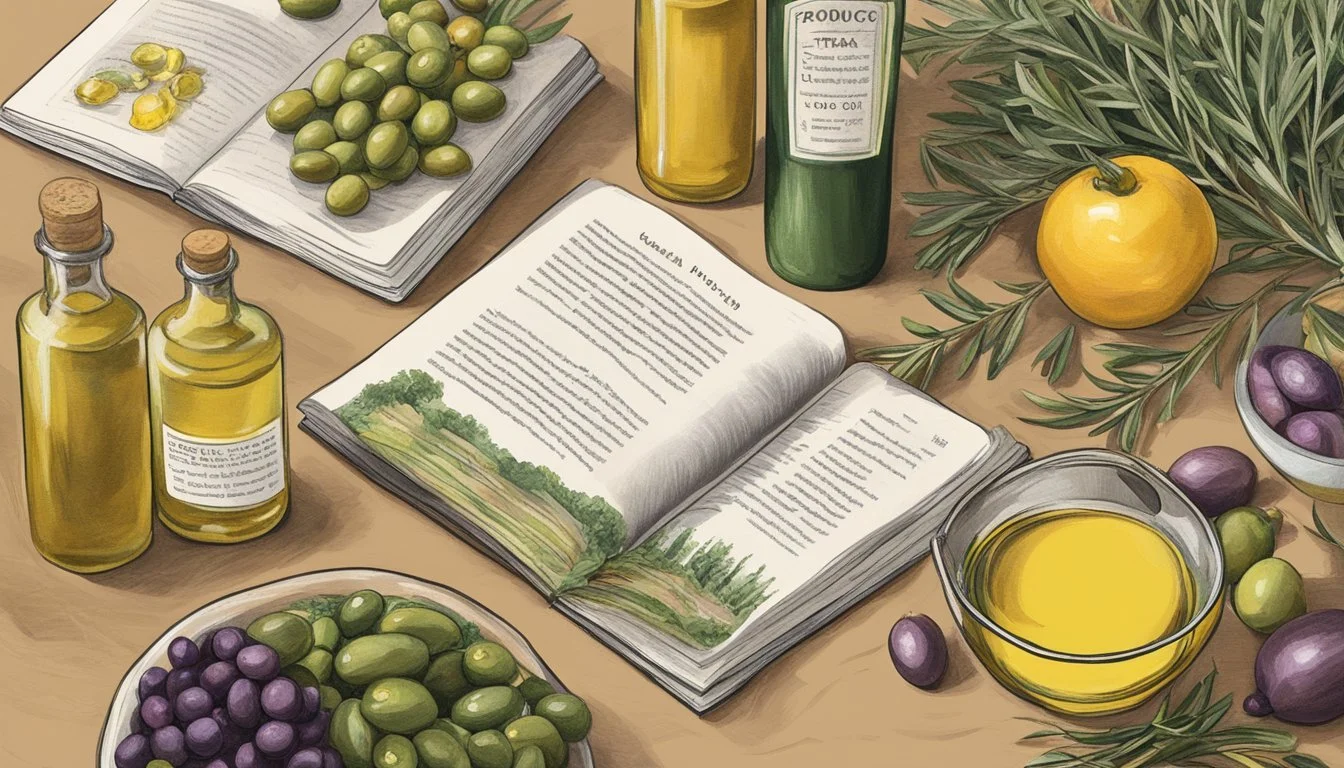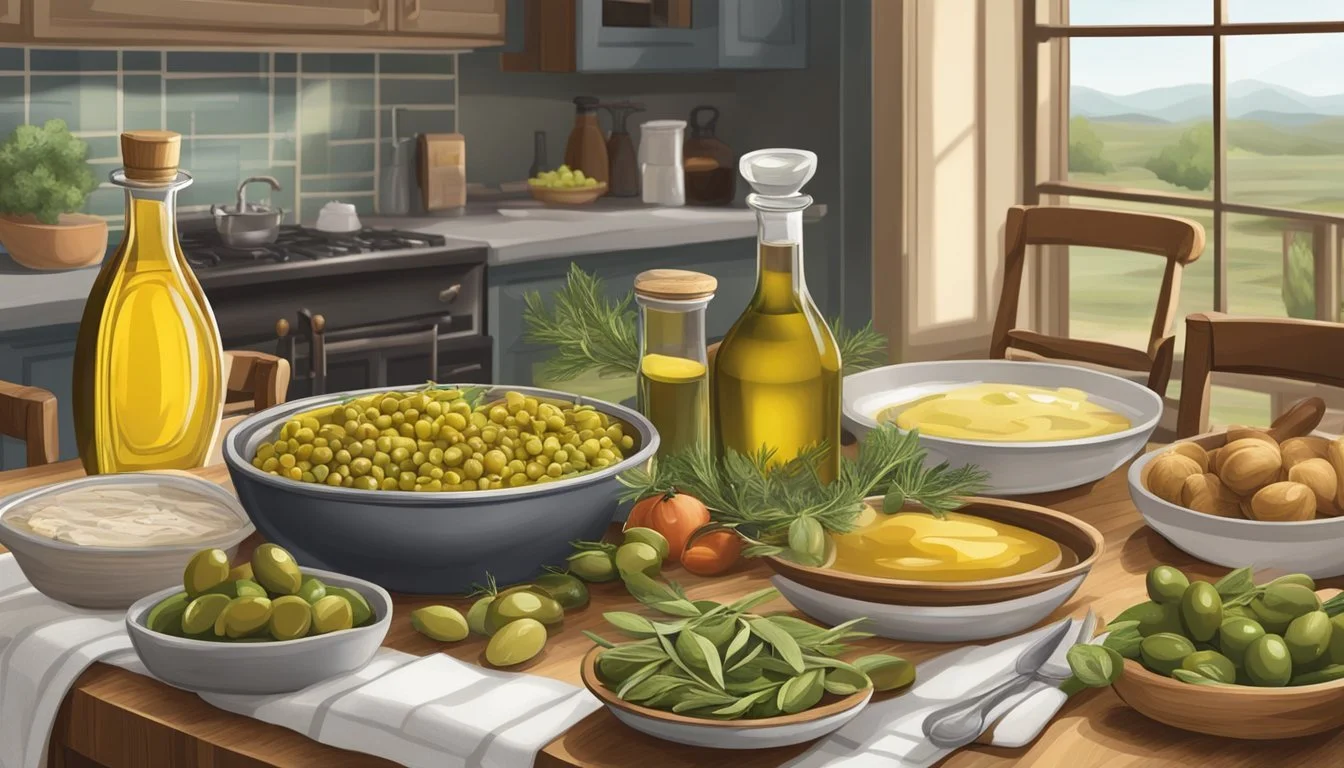How to Cook with Texas Olive Oil
Embracing Local Ingredients for Flavorful Dishes
Texas olive oil is earning a reputable spot in kitchens across the state and beyond, known for its rich flavors and versatility in cooking. Often created from locally grown olives, Texas olive oils range from the robust extra virgin variety—prized for its fresh, fruity essence—to infused options that pack a punch with garlic, lemon, or even jalapeño. Such diversity in flavor profiles allows home cooks and chefs alike to enhance the taste of their dishes while utilizing a product that supports local agriculture.
When it comes to cooking with olive oil, extra virgin olive oil holds a special place due to its method of extraction, which preserves the pure taste and a wealth of antioxidants. Despite common misconceptions, quality extra virgin olive oil has a heat tolerance suitable for both sautéing and baking, ensuring that the oil’s integrity remains intact. Whether drizzling over a salad for a nuanced finish or incorporating it into the base of a hearty stew, extra virgin olive oil can elevate the dish.
Local produce plays an instrumental role in enriching the culinary landscape, and Texas olive oil is an exemplary product of this movement. Embracing local olive oil not only boosts the regional economy but also ensures the freshness of the product, which in turn can enhance the nutritional value and taste of food. When combined with other local products, such as seasonal vegetables and meats, Texas olive oil complements and accentuates the natural flavors, creating dishes that are deeply rooted in the essence of Texan cuisine.
The Basics of Olive Oil
When exploring the world of olive oils, one must discern between the various grades, understand the health implications, and become familiar with the unique taste profiles, especially when considering Texas-made olive oils.
Understanding Olive Oil Grades
Olive oil is categorized by its production method and quality. Extra virgin olive oil (EVOO) is the highest quality, made by cold pressing without the use of chemicals or excessive heat. It’s characterized by its purity and must have no more than 0.8% free acidity. Virgin olive oil is also made from pure, cold-pressed olives, but with a slightly higher level of acidity. Below these, refined olive oils are made by processing defective oils with chemicals and heat to neutralize flavors.
Health Benefits of Olive Oil
Olive oil is renowned for its health benefits, stemming primarily from its fats composition—most of which are monounsaturated fats. These healthy fats can help reduce the risk of heart disease. Olive oil is also rich in antioxidants and polyphenols, which contribute to its anti-inflammatory properties. It's a source of vitamins E and K and is considered a healthier choice compared to oils high in saturated fats.
Taste Profiles of Texas Olive Oil
Texas olive oils often boast a distinctive flavor profile, which can range from mild and buttery to robust and peppery. The textures vary, with some oils presenting a smooth, velvety quality, while others have a more pronounced bite. This diversity allows chefs to pair Texas EVOO with a variety of dishes to enhance flavor without overwhelming the palette.
Selecting Texas Olive Oil
When choosing Texas olive oil, one should seek out high-quality, flavorful oils, such as those from Texas Olive Ranch or Texas Hill Country Olive Co, while understanding labeling and best uses.
Reading Olive Oil Labels
Labels on Texas olive oil provide critical information, which can include the type of olive oil, origin, and whether it's organic. Consumers should look for terms such as extra-virgin or virgin olive oil, which indicate the oil has been mechanically extracted without heat. Extra-virgin olive oil is the highest quality with superior taste and acidity levels below 0.8%. Refined olive oil and olive pomace oil have been chemically treated and lack the flavor complexity of virgin oils. Organic olive oil ensures no synthetic fertilizers or pesticides were used. High-quality Texas olive oils often come in dark glass bottles to protect against light, and may be labeled as unfiltered to preserve full flavor profiles.
Choosing the Right Olive Oil for Cooking
The right olive oil for cooking depends on the desired flavor and cooking application. For drizzling or dressings, extra-virgin olive oil from Texas Olive Ranch, with its robust flavor profiles, is ideal. For higher heat cooking, one can opt for virgin olive oil, which has a higher smoke point. Pure olive oil, a blend of refined and virgin oils, offers a milder flavor and is suitable for frying or baking. Texas Hill Country Olive Co provides options for both robust and milder oils. While extra-virgin is preferred for its flavor and health benefits, other forms can be chosen based on personal preference and dish requirements.
Culinary Applications
In this section, readers will gain insights into using Texas olive oil for enhancing culinary creations, from sautéing to baking, ensuring dishes are not only delicious but also embody the local essence.
Cooking Techniques with Olive Oil
Texas olive oil is versatile and can be used across a range of cooking techniques. Sautéing with olive oil introduces a medium where ingredients like garlic, mushrooms, and herbs can release their aromas and flavors. The texture of foods is preserved, and moments of temperature shift are crucial, as olive oil has a lower smoke point than some other cooking oils. In roasting, the oil's buttery characteristic can enhance the earthiness of vegetables such as mushrooms while keeping them moist.
Creating Flavorful Marinades
One can craft marinades that tenderize and infuse meats with the robust flavors of Texas olive oil. A simple marinade recipe might include olive oil, fresh basil, crushed garlic, salt, and a splash of lemon juice. Allowing the meat to marinate ensures freshness and depth of flavor, especially when prepared for the grill.
Baking with Olive Oil
Substituting olive oil for butter in baking can introduce a subtle, earthy aroma to the final product, often with a healthier profile. The key is to use the correct ratio; for every cup of butter, one can generally use 3/4 cup of olive oil. This swap works well in a variety of recipes, from sweet to savory.
Olive Oil as a Finishing Touch
Olive oil isn't just for heating; it serves beautifully as a finishing oil, drizzled over a dish just before serving to enhance flavor and texture. It’s excellent in salad dressings, combining it with vinegar, salt, and herbs. The final touch of olive oil preserves the freshness of greens and amplifies the flavor of salad dressings. Additionally, a quality Texas olive oil as a finishing touch can tie together the aroma and texture of a recipe, making it a staple for any discerning cook.
Pairing Olive Oil with Local Products
Pairing Texas olive oil with a variety of local products can enhance flavors and bring out the best in both the oil and the accompanying food.
Texas Produce and Olive Oil Combinations
Texas olive oil, known for its herbaceous and aromatic qualities, pairs exceptionally well with the state's diverse produce. For instance:
Tomatoes: A drizzle of extra virgin olive oil on freshly sliced tomatoes elevates the fruit's natural sweetness.
Leafy Greens: Olive oil makes a simple yet delicious salad dressing when whisked with lemon juice and herbs.
Grilled Vegetables: Brush olive oil on bell peppers or zucchini before grilling to obtain a lightly charred and moist result.
Olive Oil and Artisanal Breads
Artisanal breads of Texas serve as a fantastic canvas for showcasing the rich, smooth profiles of local olive oils:
Dipping: Pour olive oil into a shallow bowl and add a splash of balsamic vinegar for a tangy dip.
Toasting: Brush artisan bread with olive oil and toast it for a crisp texture and enhanced flavor.
Infused Olive Oils and Local Ingredients
Infused olive oils, merging the essence of local ingredients with olives, offer a versatile way to add complexity to dishes:
Jalapeño Infused Olive Oil: Perfect for adding a spicy kick to recipes, it can be drizzled over pizza or mixed into marinades.
Garlic Infused Olive Oil: This brings a subtle warmth that complements roasted potatoes or popcorn.
In each pairing, the goal is to complement and enhance, never to overshadow the quality and taste of the local products with the olive oil.
Storing and Preserving Olive Oil
For culinary enthusiasts, understanding the importance of storing olive oil correctly is essential to maintaining its freshness and flavor profile. Here are the best practices for keeping Texas olive oil at its peak quality.
Proper Storage Techniques
One should store olive oil in a cool, dark place such as a pantry to maintain its quality. Exposure to light, particularly sunlight and fluorescent light, can degrade the oil, hence it is advisable to use dark glass bottles or tins to shield it from light. Oxygen and heat are also detrimental to olive oil's stability, so keeping the bottle sealed tight when not in use is imperative to prevent oxidation. A consistent storage temperature, ideally between 57°F (14°C) and 60°F (16°C), is recommended.
When choosing a spot for storage, these factors must be considered:
Temperature: Below room temperature but not refrigerated
Light: Minimized by using dark glass or storing in a dark place
Seal: Airtight to limit oxygen exposure
Extending Olive Oil Freshness
Once opened, the freshness of olive oil can be extended by following certain tips. Using the olive oil within three to six months of opening will ensure one enjoys the freshest taste. The storage conditions remain the same as unopened bottles, but it's more crucial to adhere strictly to these guidelines as the oil degrades more quickly upon exposure to air and light. One should always:
Close the lid tightly after each use
Avoid storing next to the stove or other heat sources
Consider the use of oil pourers that minimize air exposure
By understanding and applying these storage principles, the flavor and quality of Texas olive oil can be preserved for longer, allowing for an enhanced cooking experience with local products.
The Impact of Olive Oil Beyond Cooking
While olive oil is renowned for its role in cooking, its influence extends into medicine and cosmetics, as well as playing a part in the historical trade landscape.
Olive Oil in Medicine and Cosmetics
Olive oil, a staple of the Mediterranean region, has found its way into various medical and cosmetic applications. In medicine, it has been used for its anti-inflammatory and antibacterial properties, which can help with skin conditions and promote heart health. Studies have demonstrated that olive oil polyphenols can contribute to cardiovascular wellness.
In the realm of cosmetics, olive oil is a key ingredient due to its moisturizing effects and rich content of vitamins A, D, E, and K. It's incorporated into creams, lotions, and serums that aim to hydrate the skin and reduce signs of aging. The United States has seen a rising trend in organic and natural cosmetic products, with Texas olive oil becoming an appealing choice for its local and high-quality attributes.
Olive Oil as a Historical Commodity
The history of olive oil as a traded commodity goes back thousands of years, particularly within the Mediterranean region where olive trees are indigenous. It has long been a symbol of culture and prosperity in this area. In the United States, Texas has become a notable part of this history, as it contributes to the craft and small-scale production of olive oils, which often appeal to consumers interested in local and artisanal products.
Historically, olive pomace—the solid residue remaining after the milling of olives—has also served as a low-grade fuel source. While not a primary fuel for modern economies, the knowledge of its combustible properties is a testament to the multifaceted uses of olive products through time.
Conclusion
Texas olive oil has established itself as a reputable choice for home chefs looking for premium quality in their cooking. Being pressed from olives grown on Texan soil, this oil brings a unique local flavor to the table. Not only does it enhance dishes with its taste, but extra virgin olive oil also offers numerous health benefits, including heart-healthy fats and antioxidant properties.
Choosing local produce to pair with Texas olive oil not only supports the local economy but also ensures that the food on the plate is as fresh and nutritious as possible. Home chefs are encouraged to explore the synergies between Texas olive oil and other local products to elevate their culinary creations, ensuring a rich and authentic flavor profile.
Cooking tips:
For the best flavor, select extra virgin olive oil for dressings and low-heat cooking.
Maintain the oil's stability by avoiding high-heat cooking, which might compromise the taste and health attributes.
Remember, the smoke point of olive oil varies; however, high-quality extra virgin olive oil can withstand most home cooking temperatures.
By leveraging the strengths of Texas olive oil, such as its stability, rich texture, and robust flavor, one can craft satisfying and wholesome meals. Acknowledging the oil's behavior under heat, home chefs can make informed decisions on how to best use this versatile ingredient, mindful of preserving its integrity and maximizing its culinary potential.
Additional Resources
In this section, readers will find curated resources to enhance their culinary experience with Texas olive oil. They’ll discover recipes to create delectable dishes and guides to appreciate the nuances of olive oil through tasting.
Recipes Featuring Texas Olive Oil
For home chefs looking to bring the rich flavors of Texas olive oil to their cooking, there are numerous recipes that specifically showcase this versatile ingredient. These recipes not only highlight the oil's robust flavor but also often incorporate other fresh, local ingredients to create a truly Texan culinary experience.
Appetizers: Olive oil drizzled over fresh Texas tomatoes and basil.
Main Courses: Grilled meats marinated in herbed olive oils.
Desserts: Olive oil infused cakes and breads.
These recipes are a testament to the creativity of Texan cuisine and are perfect for anyone eager to explore the delights of cooking with olive oil.
Guides to Olive Oil Tasting
Tasting olive oil is an art that can enhance one's appreciation for this culinary staple. Guides are available to help tasters discern the subtle flavors and notes in different varieties of Texas olive oil.
Sensory Qualities: Look for descriptors of fruitiness, bitterness, and pungency.
Pairing Suggestions: Match olive oils with complementary Texas-produced foods and wines.
Whether a novice or a seasoned taster, these guides provide valuable insights into enjoying and understanding the complexities of olive oil.









